Last updated: May 31, 2023
We have a friend that trains horses, and he called us over to watch one of his gaited horses work. I was excited because we don’t often see these types, but my grandson wasn’t enthusiastic about going at all – he asked, “what exactly are gaited horses?”
Gaited horses are a special breed of horse that has a natural way of moving that is smooth and easy to ride. There are many different types of gaited horses, including the Tennessee Walking Horse, the Paso Fino, and the Icelandic horse.
There’s something special about gaited horses. Maybe it’s their smooth gait or the way they seem to glide across the ground. Whatever it is, these horses have become increasingly popular in recent years. But what are they? And why are they so popular?
What Are Gaited Horses?
Gaited horses are a specific type of horse that exhibits a smooth, four-beat gait. This means they move their legs in a way that creates four even beats, as opposed to the three uneven beats of most other horses.
Naturally, gaited horses have different foot patterns than non-gaited horses because they were bred to move in specific ways. These horse breeds are selectively bred to exhibit a certain style of leg movement.
There are four main types of gaits: walk, trot, canter, and gallop. Each breed of gaited horse has its own unique way of traveling. But all naturally gaited horses use each leg independently and keep one on the ground, which prevents the jarring you feel when riding a non-gaited horse.
Gaited horses travel in a specific four-beat footfall pattern that is different from other breeds of horses. The footfall pattern is the sequence in which a horse’s legs hit the ground as it moves forward.
Non-gaited horses generally perform one gait at a time and must transition between them by changing their footfalls; this takes effort on behalf of both the rider and the horse, which can result in increased fatigue during long rides or trail rides.
Gaited horses typically have lots of energy and stamina because their way of moving requires less energy than traditional gaits, making them excellent for long trail rides and endurance competitions.
Some people choose to ride gaited horses because they find them more comfortable than non-gaited horses, while others enjoy the challenge of training and riding a horse that does something different than all the rest.
How to Spot a Gaited Horse
Do you know how to spot a gaited horse? It can be tricky since many horses exhibit some gaiting tendencies even if they are not true gaited horses.
The easiest way to identify a gaited horse is by watching its movement. Gaited horses have a smooth, even gait that differs from the up-and-down motion of non-gaited horses. If you see a horse moving without a bounce, it is likely a gaited horse.
Another giveaway is the presence of their feet landing independently with one foot always on the ground. This can be seen when the horse is in motion. In addition, gaited horses often carry their heads and tails high, creating a grand appearance.
Why Are Gaited Horses Popular?
There are many different types of horses, each with its own unique characteristics and abilities. Gaited horses, in particular, are becoming increasingly popular thanks to their smooth gaits and gentle dispositions.
–Good for beginners: Gaited horses always have one foot on the ground, so they never drop between steps; their even gait makes it easy for people of all experience levels to ride them. Furthermore, gaited horses are surefooted.
-Surefooted: My good friend owned a few Tennessee Walkers, and his gaited horses were bred specifically for trail riding. These animals stepped over logs and climbed steep hills without ever taking a bad step. Besides our friend on his mule, the Tennessee Walkers were the most sure-footed equines on the trail.
-Even Temperament: I’ve heard people say they are hot-headed, and others claim they are lazy, but the truth is most gaited horses are gentle, even-tempered, and smart.
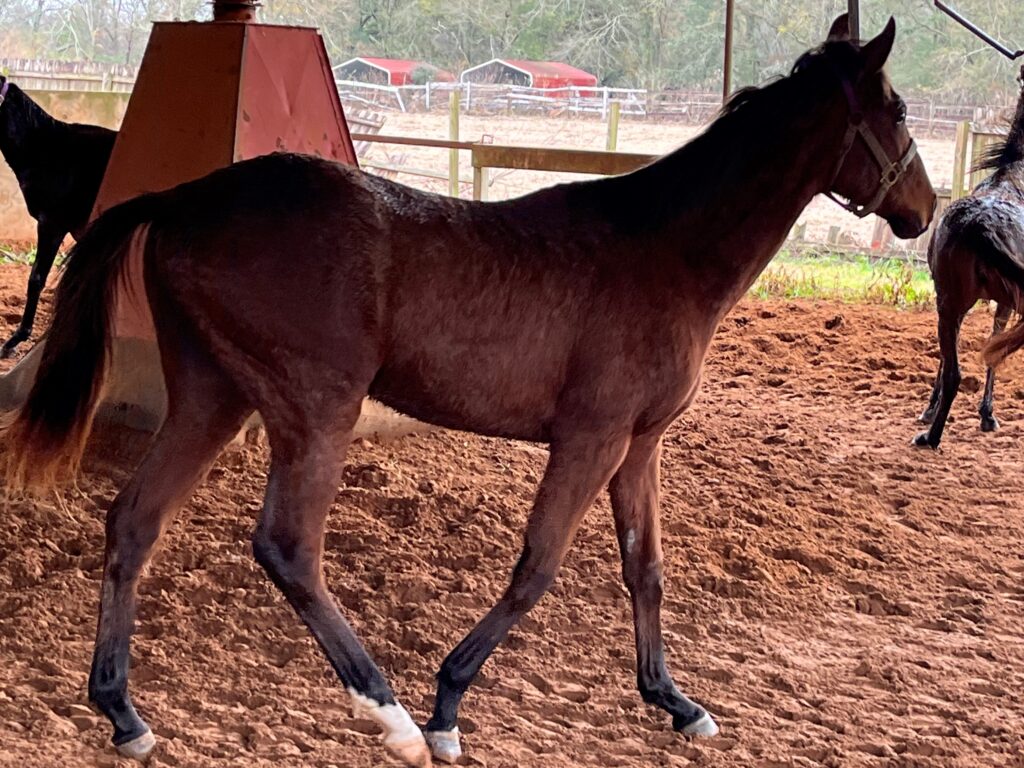
What is the Standard Gaits of Gaited Horses?
There are many different terms used to describe gaits, such as “running walk,” “racking,” “ambling walk,” and “fox trot.” But don’t worry – we’re going to explain all of them in detail below!
Running walk
A running walk is a four-beat gait that combines the best features of both walking and running. The horse moves its legs in a lateral pattern, with the hind legs reaching past the track of the forefoot.
This results in a smooth and flowing stride that is comfortable for both the horse and rider. Tennessee Walking Horses are famous for their “running walk” gait.
Racking gait
A rack is a four-beat lateral pace that is also smooth and comfortable for the horse and rider. The horse moves both legs on the same side simultaneously. This produces an even slower speed than the stepping pace, making it perfect for long-distance riding or show competitions.
Horses traveling in the racking gait move faster than a walk but slower than a gallop. The racking gait is most often associated with the American Saddlebred Horses.
Ambling walk
An ambling walk is another four-beat gait that is often used by gaited horses. It’s slower than a running walk, but still has a lot of energy and bounce to it.
Ambling walks are usually performed at a trot or pace but can be done at a slow jog if necessary. Standardbred and Icelandic horses are two breeds well-known for their ambling gait.
Foxtrot
The fox trot is a four-beat diagonal gait that is often used by gaited horses. It is slower than a running walk but still has a lot of energy and bounce to it. When you see a horse moving in this gait, it appears its front legs are in a walk while its rear legs are trotting.
Foxtrots are usually performed at a jog or pace but can be done at a slow ambling speed if necessary. Missouri Foxtrotters are well known for performing this gait.
Stepping pace
The stepping pace is a gait that is used in harness racing and when pulling carts or wagons. The horse moves its legs in a diagonal pattern, with the hind legs crossing in front of the forelegs as they move forward together (or back).
This results in smoothness for both rider and mount alike – no jarring motion from side steps. Two breeds that naturally use the slow or stepping pace are the Saddlebred and Icelandic horses.
Gaited Horse Breeds: The Most Common Types
If you’re looking for a horse that has a smooth, easy-going gait, you may want to consider a gaited breed. Gaited horses are known for their gentle way of going and are prized by many riders.
There are several different types of gaited horses, but the most common ones include the Tennessee Walking Horse, the Paso Fino, and the Missouri Fox Trotter.
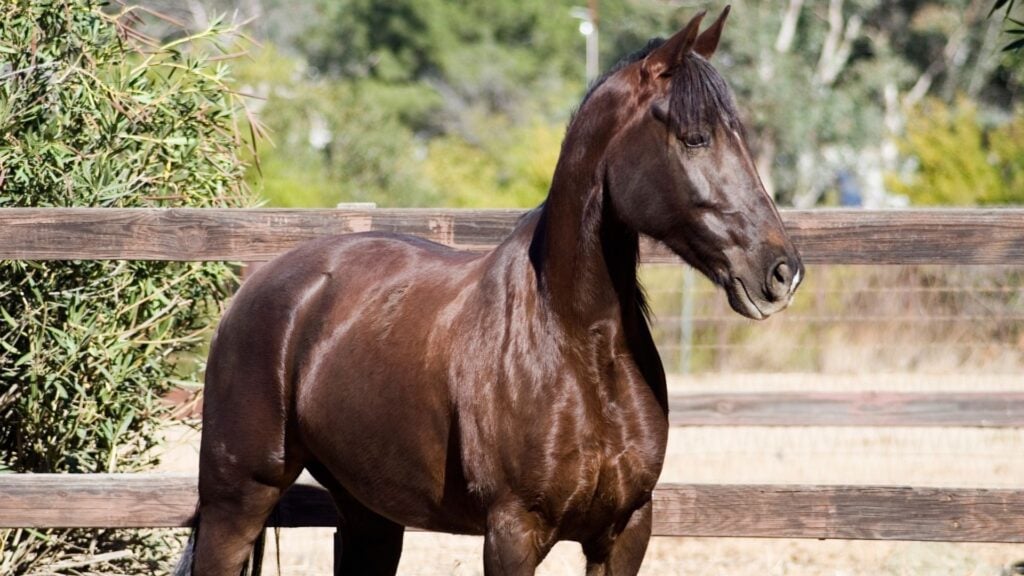
Tennessee Walking Horse
The Tennessee Walking Horse is the most popular gaited horse breed in the United States. They are known for their smooth gait and easy-going temperament. These horses come in a variety of colors, including chestnut, black, bay, and gray. They usually stand between 14 and 16 hands high and weigh around 1000 pounds.

Icelandic Horse
The Icelandic Horse is a unique breed that originated in Iceland. It is also a gaited breed of horse.
These horses come in a variety of colors, including chestnut, black, bay, and gray.
They usually stand between 13 and 14 hands high and weigh around 900 pounds.
Missouri Fox Trotter
The Missouri Fox Trotter is another common gaited horse breed. They are known for their smooth gait and comfortable ride.
These horses come in many different colors, including sorrel, buckskin, palomino, roan, and gray.
They usually stand between 14 and 15 hands high and weigh around 900 pounds.
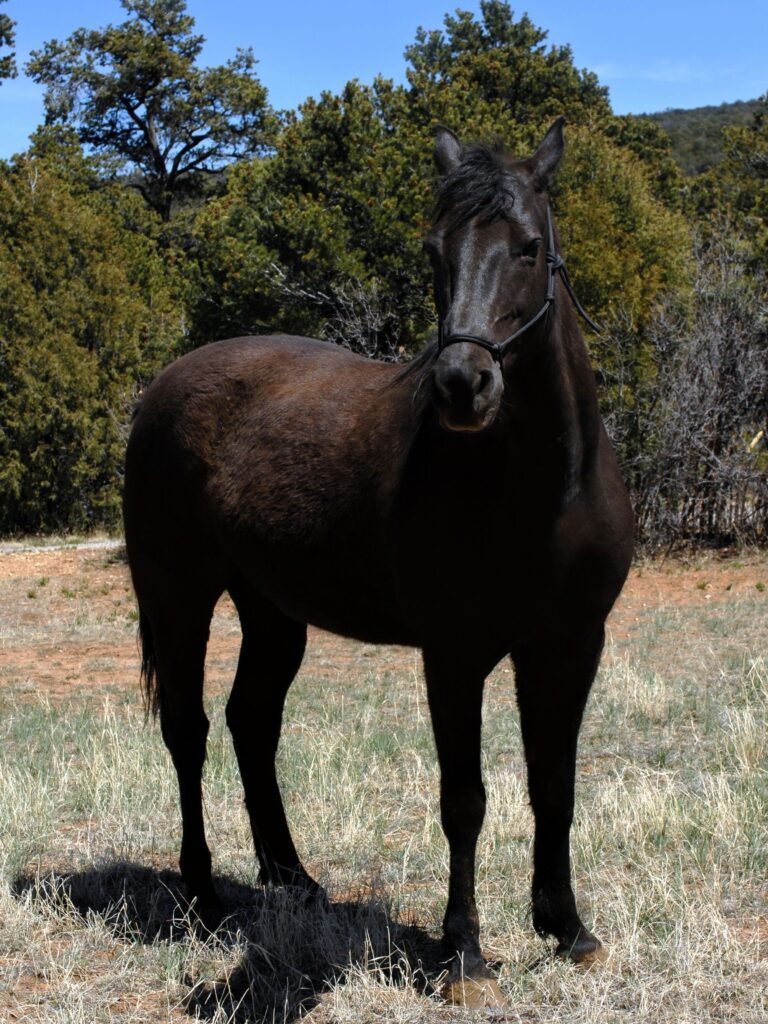
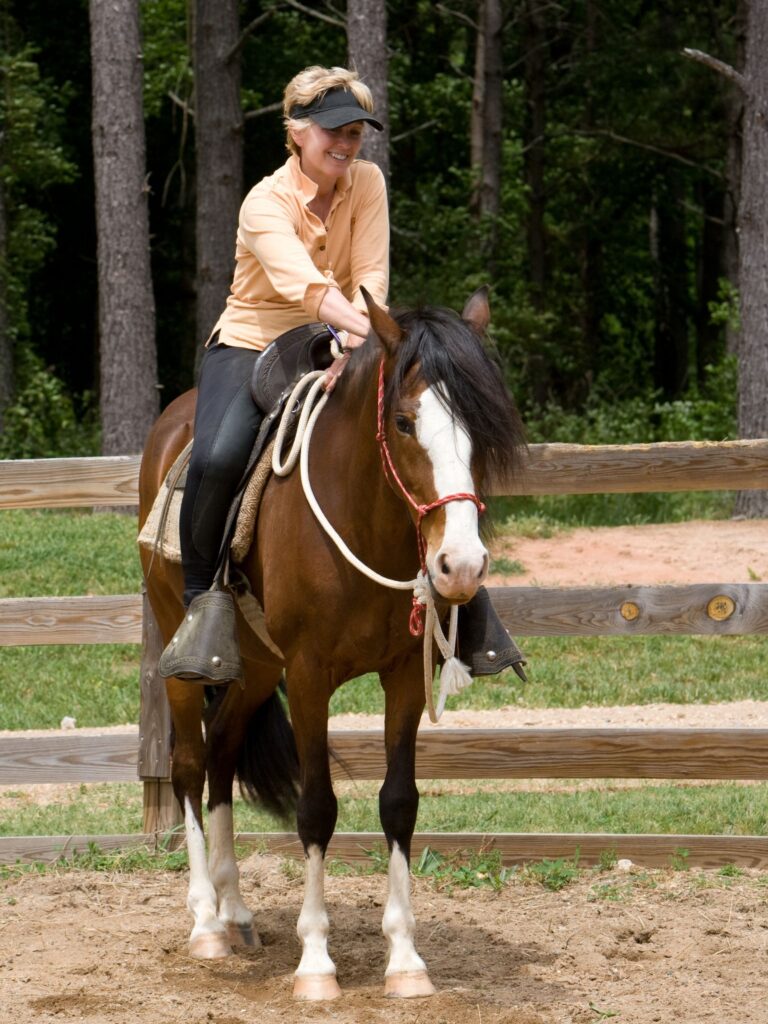
Peruvian Horse
The Peruvian Horse is another unique breed that originated in Peru. It is also a gaited breed of horse.
These horses come in many different colors, including sorrel, buckskin, palomino, roan, and gray.
They usually stand between 14.1 and 15.2 hands, weighing between 900 and 1,100 pounds or more!
Paso Fino
One of the most popular gaited horse breeds is the Paso Fino. These horses originated in Puerto Rico and are known for their smooth and fast Paso Largo gait.
They come in many different colors, including black, bay, chestnut, and gray.
They usually stand between 13 and 15.2 hands high and weigh around 800 pounds.
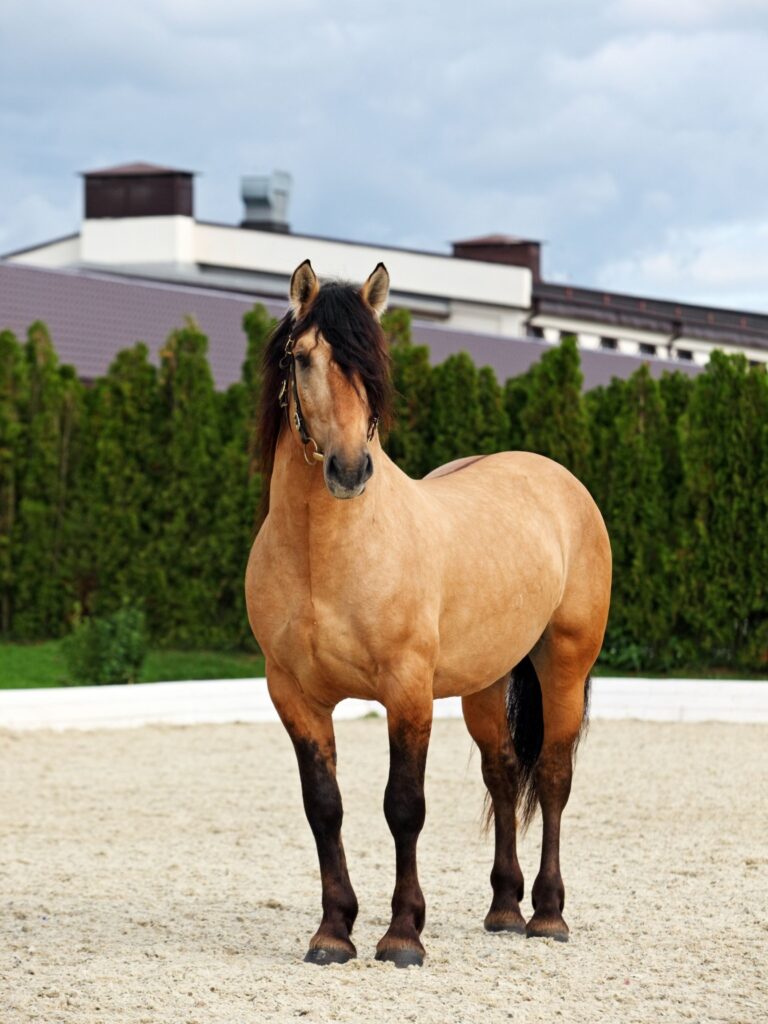
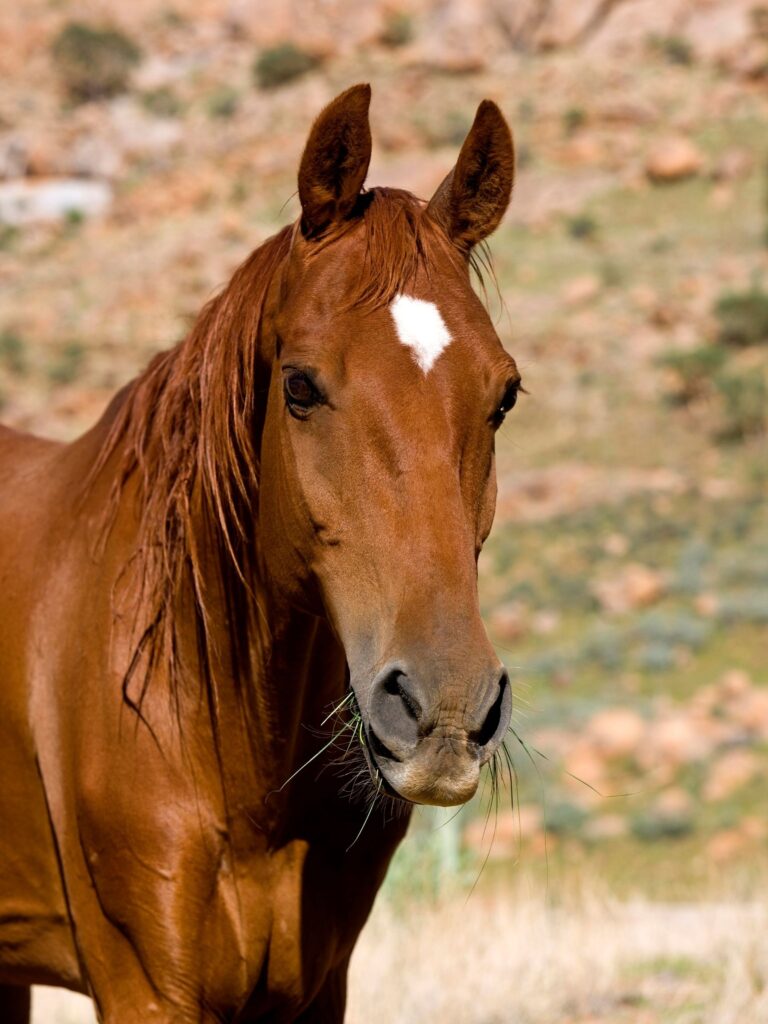
Saddlebred
Saddlebred horses are typically trained in three or five gaits, including the animated walk, trot, slow gait, rack, and canter.
They come in many different colors, including bay, black, brown, chestnut, and palomino.
They usually stand between 15 and 16 hands high and weigh around 1000 to 1200 pounds.
The Saddlebred is the only trotting breed in the world with a genetic predisposition to gait.
Rocky Mountain Horse
The Rocky Mountain Horse is a gaited horse breed that originated in the United States it is known for its calm demeanor and smooth four-beat gaits.
These horses come in many different solid colors, including black, bay, buckskin, chestnut, palomino, and white.
They usually stand between 14 and 15 hands but can be 16 hands high. They typically weigh around 900 to 1000 pounds.
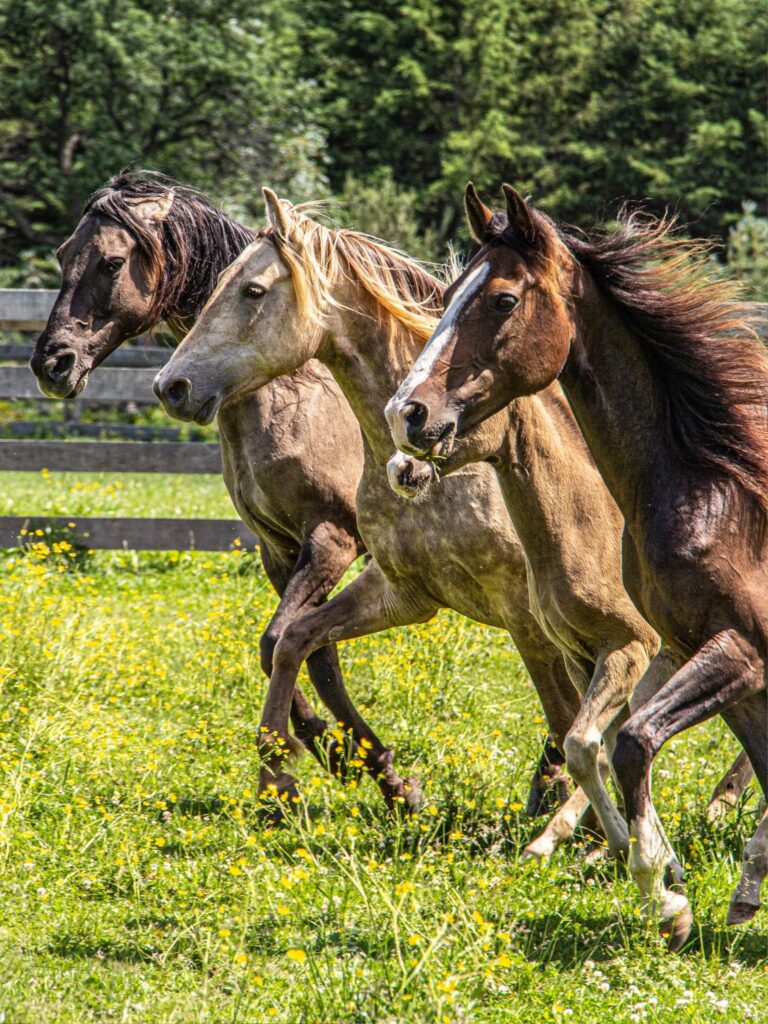
Conclusion
Horses that have a smooth four-beat gait are called gaited horses. Gaited horses are popular for many reasons- they’re comfortable to ride, can cover more ground with less fatigue, and some breeds are even known for their speed.
FAQ
Do gaited horses need a special saddle?
No, you don’t need a special saddle to ride a gaited horse. If you have a saddle that fits your horse correctly, it will work fine on a gaited horse.
Can gaited horses jump?
Yes, gaited horses can jump, and some do quite well, such as Tennessee Walkers. However, none of the top show-jumping horse breeds are gaited.
Can gaited horses canter?
Yes, gaited horses can travel in almost any gait, including canter. Some may take to it naturally, while others may need encouragement.

About the Author: Miles Henry
Lifelong Horseman | Racehorse Owner | Published Author
Miles Henry brings over 25 years of hands-on experience training and owning Thoroughbred racehorses. Raised with Quarter Horses and Appaloosas, he’s spent a lifetime learning from horses—on the track, in the barn, and in the field. Today, he runs a small but successful racing stable in Louisiana and shares real-world insights on HorseRacingSense.com, helping horse owners, fans, and bettors navigate the sport with confidence.
📚 Books: View Miles’s books on Amazon »
🎧 Podcast Guest: Animal Tales Ep. 32 |
YouTube Interview
📩 Newsletter: Sign up for racing tips and horse care advice »
🔗 Follow Miles:
Twitter |
Facebook |
YouTube


